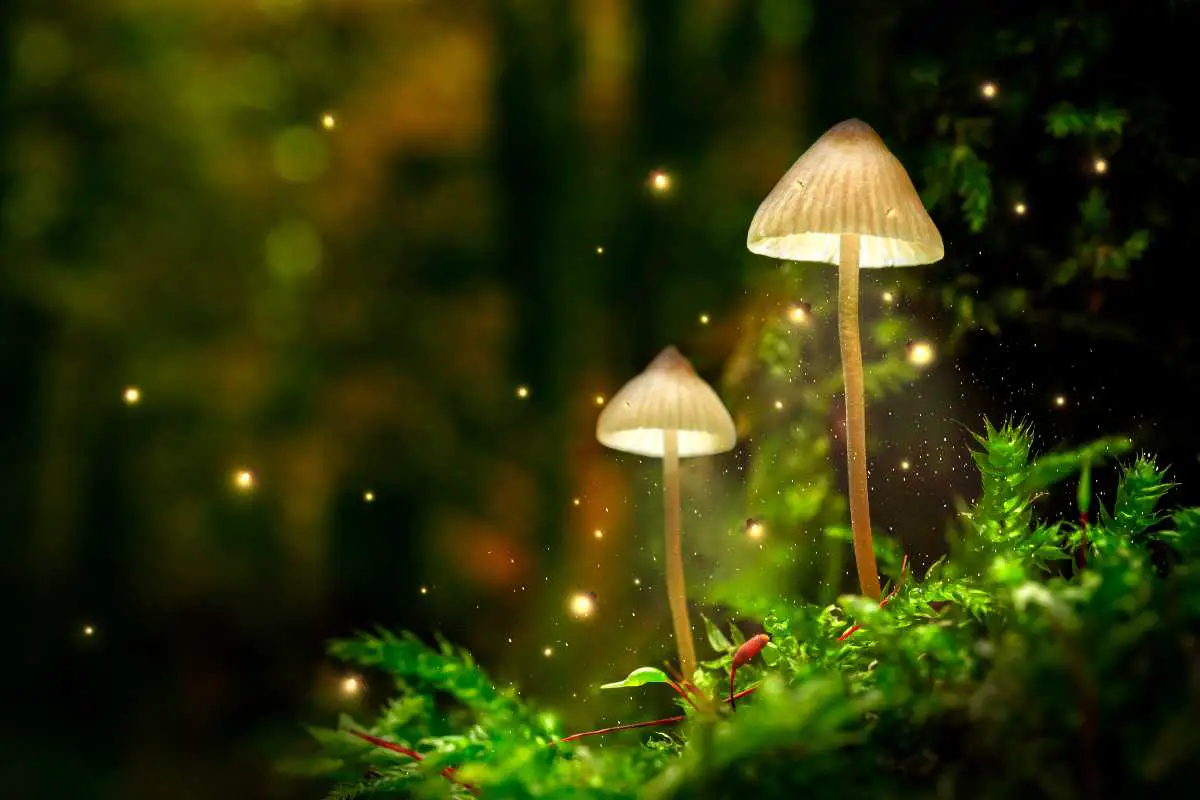Most of the common mushroom species are usually white or brown and have a distinctive umbrella-like shape.
However, some varieties have, over the years, adapted to have some unique shapes, colors, and properties.
For instance, some have evolved to resemble flowers and even gained intricate structures and colors that resemble floral arrangements.
While there are many reasons for this, most scientists believe this adaptation is meant to help them reproduce. By mimicking the appearance of flowers, these mushrooms are able to attract insects and small animals that can help spread their spores.
However, it is important to note that not all mushrooms are safe to eat. Hence, being able to recognize mushrooms in the yard precisely is crucial.
In this article, I will list some of the mushroom species that look like flowers and can be found in your garden.
Quick List
- Bleeding Mycena (Mycena haematopus)
- Candy Coral Mushroom
- The Pinkgill (Entoloma vernum)
- Rosy Bonnet (Mycena rosea)
- Golden Spindle (Clavulinopsis fusiformis)
- Stinking Dapperling (Lepiota cristata)
- Wood Blewit (Lepista nuda)
- Fly Agaric (Amanita muscaria)
- Yellow Morel (Morchella esculenta)
1. Bleeding Mycena (Mycena haematopus)
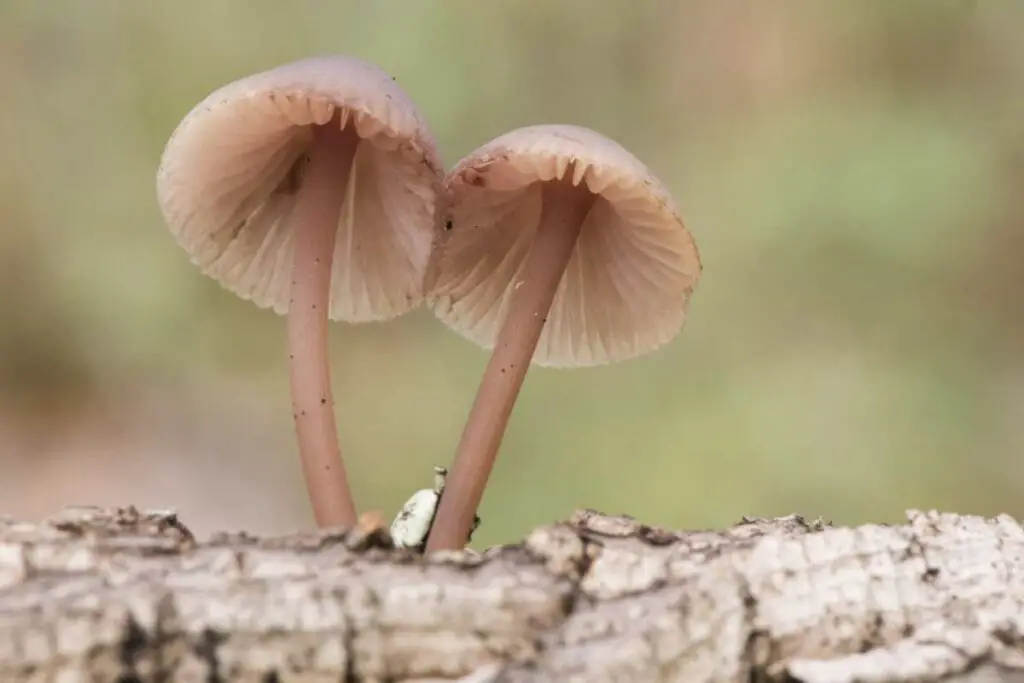
This little, dark reddish-brown fungus has a cap between 0.5 and 2 centimeters in diameter. The stem typically has white flesh and the same hue as the cap.
The white gills can have a pink or purple hue as the mushroom ages.
In gardens, Bleeding Mycena, which resembles a little red flower, is frequently seen growing on decaying wood, leaf litter, or dirt.
Although Bleeding Mycena is not harmful due to its small size and unpleasant flavor, it should not be consumed.
2. Candy Coral Mushroom
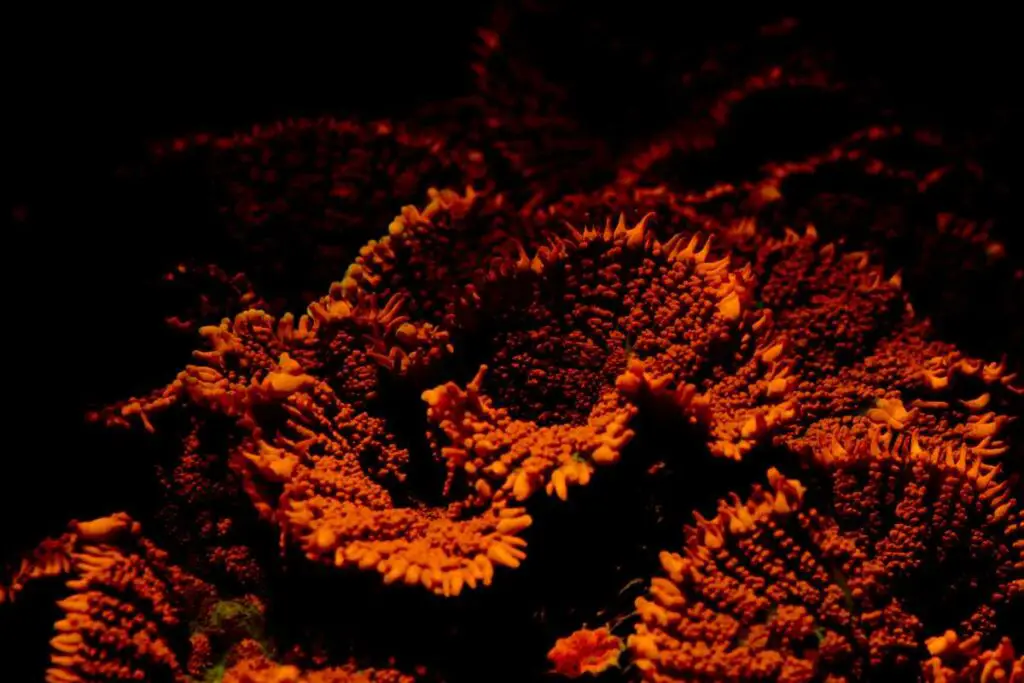
The Candy Coral mushroom is a tiny, delicate fungus that resembles coral and grows in groups. Its hue might be anything from brilliant orange to pinkish-white.
There is no mystery why the Candy Coral is frequently mistaken for a flower. Its delicate branches suggest a coral reef or a little flower arrangement. It typically grows on moss, dirt, or leaf litter in gardens.
Although these mushrooms can be eaten, it is not a food that is frequently consumed and has a mild flavor.
3. The Pinkgill (Entoloma vernum)
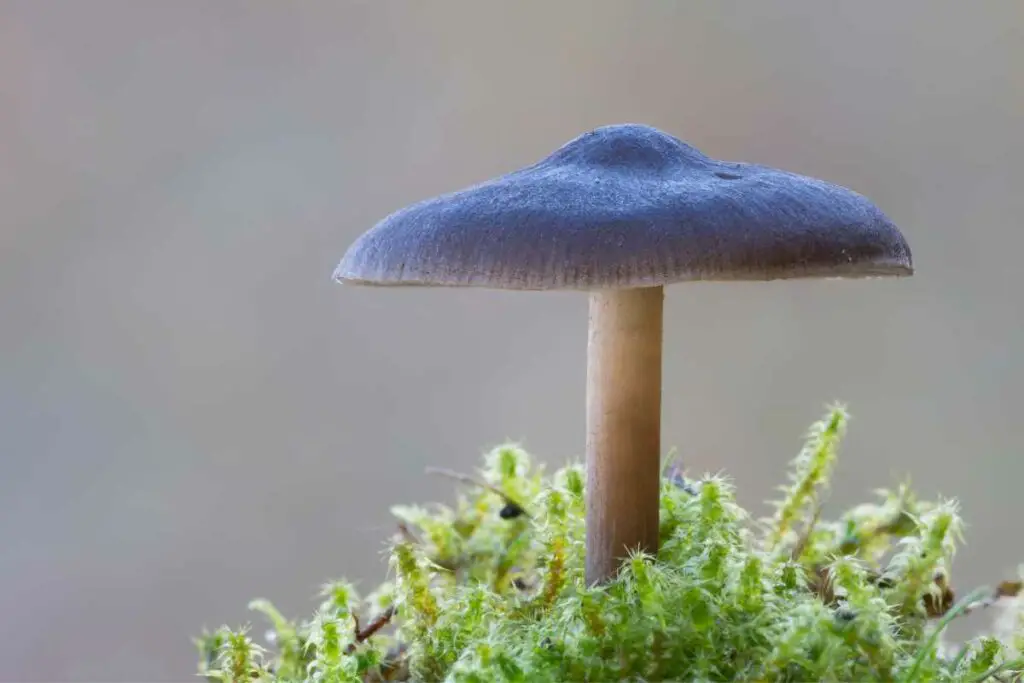
This mushroom has an eye-catching pink or purple gill contrasting with its white or light gray cap. The stem often has a smooth texture and is white or light gray.
The Pinkgill frequently grows in rings or clusters in gardens and lawns. This mushroom can be mistaken for a tiny pink or lilac flower because of its color and shape.
However, do not let its pleasant look fool you. The Pinkgill is poisonous and should not be eaten. Although its toxicity is low, and usually results in nausea or vomiting.
4. Rosy Bonnet (Mycena rosea)
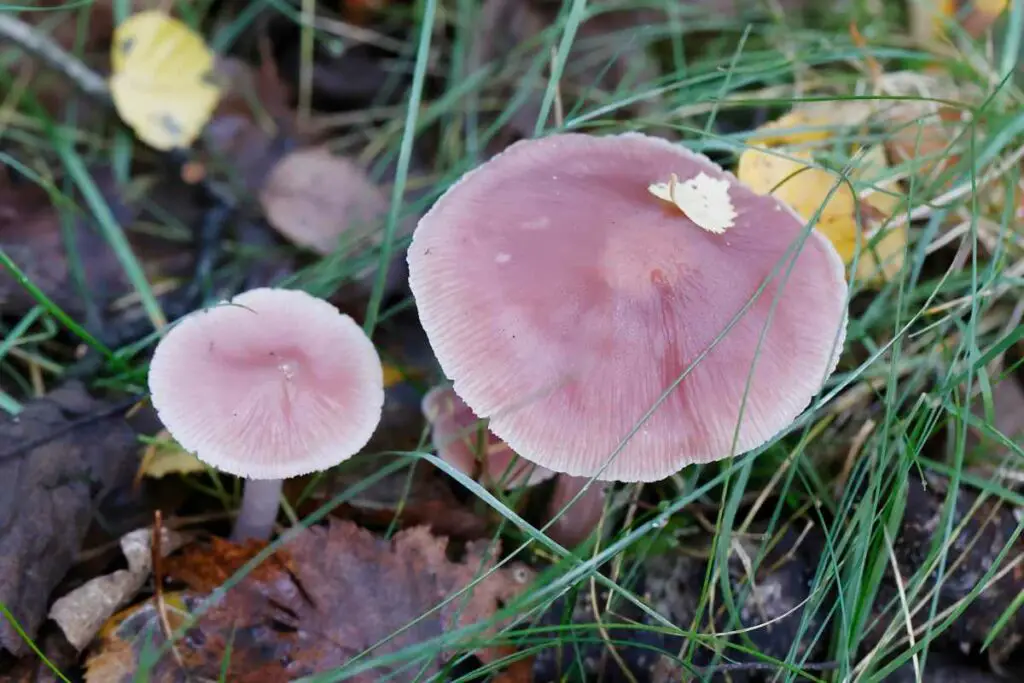
This mushroom has a characteristic pinkish-red or reddish-brown cap with a 1 to 3-cm diameter. Also, the stem often has a smooth texture and the same color as the cap.
The white or pale pink gills can develop a brown hue when the mushroom ages.
The Rosy Bonnet grows on rotting wood or dirt in gardens and resembles a little pink or brown flower. This mushroom is not poisonous, but because of its small size and mediocre flavor, it is not considered food.
5. Golden Spindle (Clavulinopsis fusiformis)
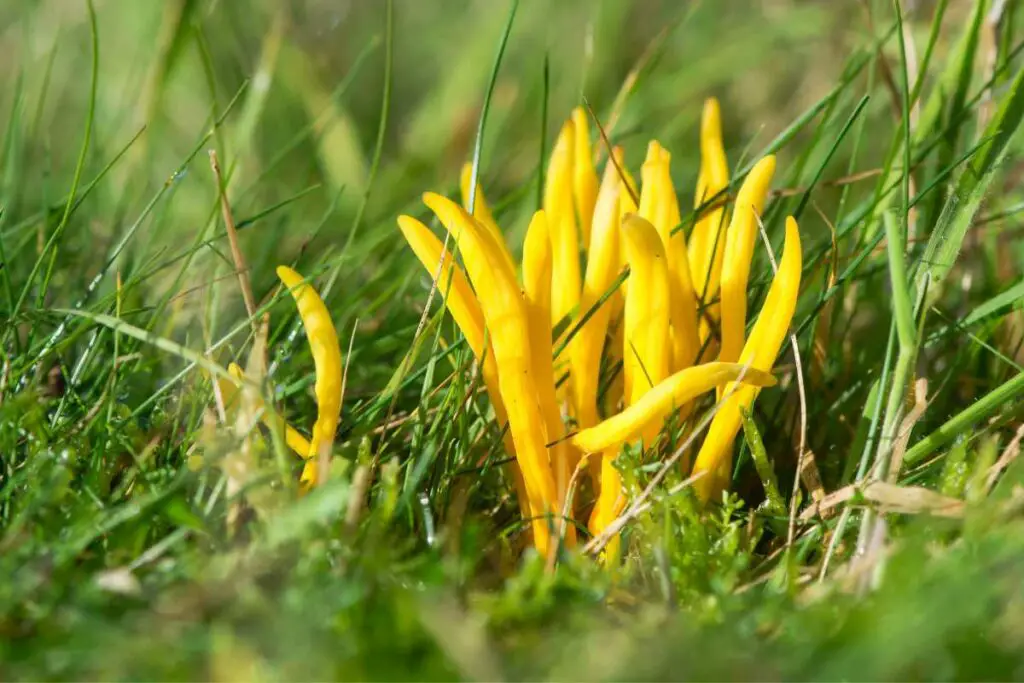
This mushroom grows in clusters resembling miniature flower bouquets and has a vivid yellow-to-orange color. The Golden Spindle has a slender stem that tapers off towards the bottom.
It frequently grows on dirt, leaves, or decomposing wood in gardens. The Golden Spindle is edible; however, because of its unimpressive flavor, it is not frequently ingested.
6. Stinking Dapperling (Lepiota cristata)
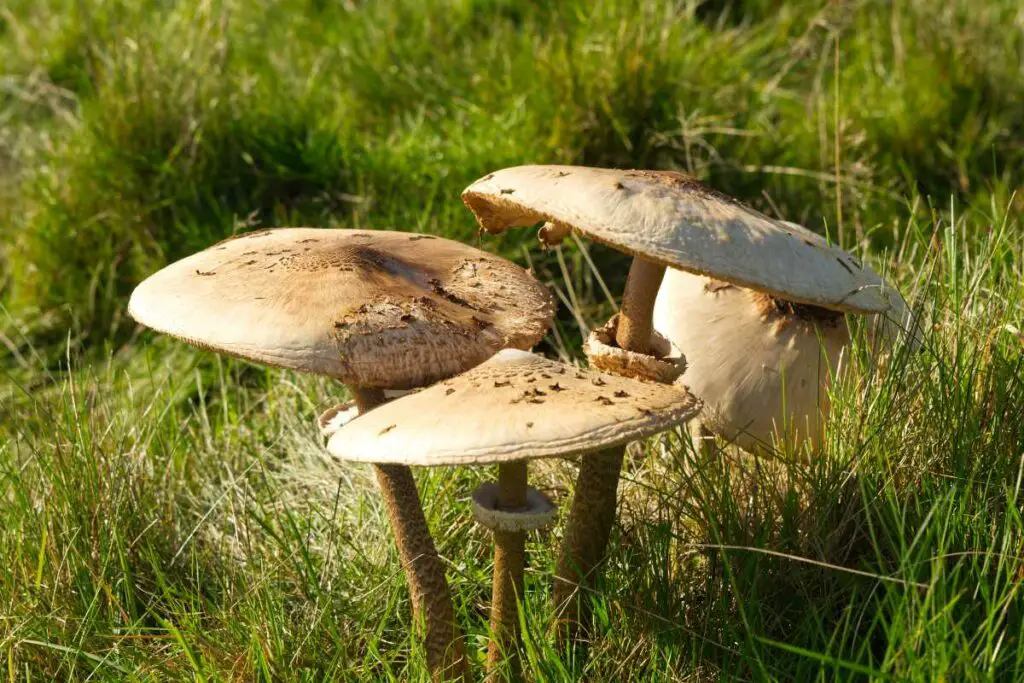
This mushroom has a characteristic 5 to 15 cm in diameter yellowish-brown cap. Initially white, the gills turn brown as the mushroom ages. The stem is tall and thin, with an eye-catching ring surrounding it.
The Stinking Dapperling grows in gardens on soil or rotting wood and resembles a little yellowish-brown flower.
It should not be consumed because it is poisonous. Lepiota, a toxin in the Stinking Dapperling, can result in severe gastrointestinal distress, including nausea, vomiting, diarrhea, and abdominal pain. It may, in extreme situations, harm the liver. It is imperative to avoid eating this mushroom as a result.
7. Wood Blewit (Lepista nuda)
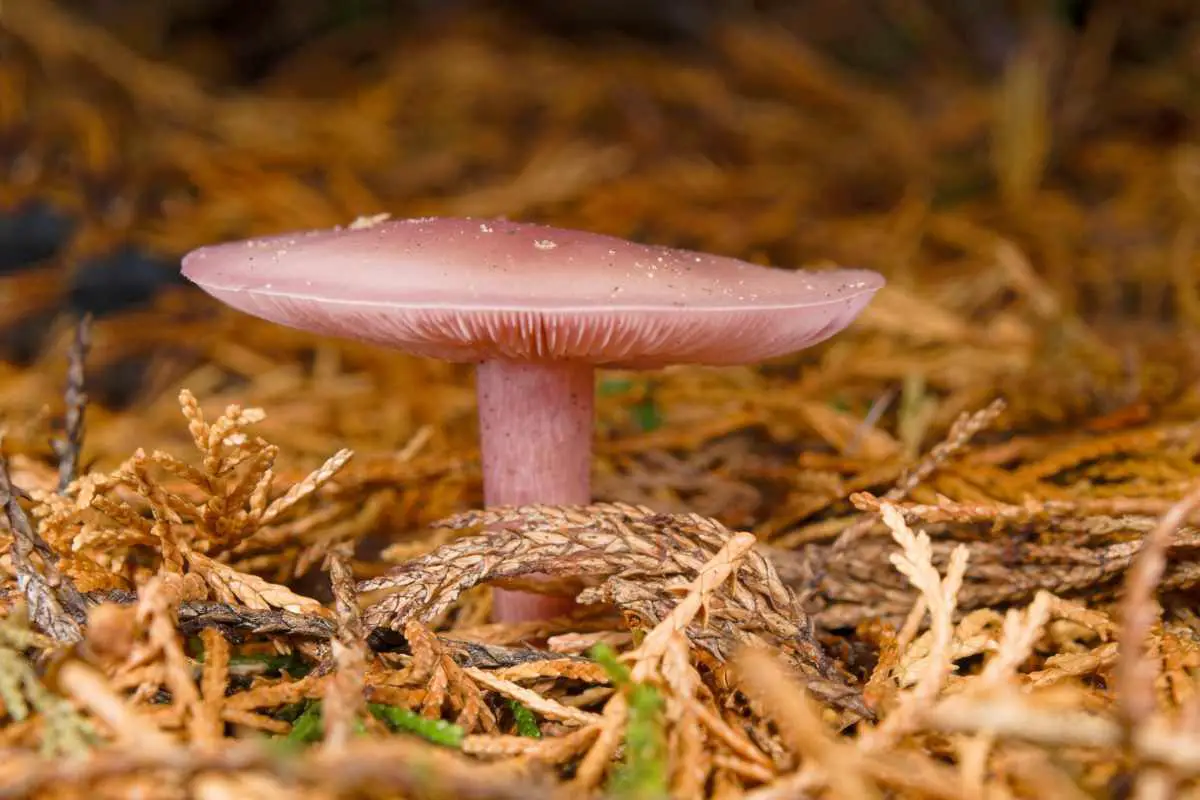
The distinctive lilac to-purple crown of the Wood Blewit (Lepista nuda) measures 5 to 15 cm in diameter. The mushroom’s gills start white and turn a light purple as it ages.
The stem is either white or lilac, short and strong. The Wood Blewit is frequently seen growing in gardens on soil or leaf litter, and it might mimic a tiny purple or lilac flower in appearance.
It tastes nutty and earthy and is edible. Because of how similar its flavor is to that of walnuts or hazelnuts, it is a common ingredient in many different types of food.
The mushroom’s cap and stem, which can be used in risottos, stews, and soups, are edible. The Wood Blewit is a frequent food enjoyed by mushroom fans.
8. Fly Agaric (Amanita muscaria)
The vivid red cap of the Fly Agaric (Amanita muscaria) can be anywhere between 8 and 20 centimeters in diameter. White dots that can be removed from the cap are all over it.
The stem is white and frequently has a ring on it. The Fly Agaric is a plant that grows in gardens, wooded regions, and other natural locations and might resemble a red or orange flower.
It contains the strong toxin muscimol, which makes it toxic and should not be taken. Hallucinations, nausea, vomiting, and diarrhea are some of the signs of Fly Agaric poisoning.
The Fly Agaric has been used for recreational reasons in several cultures and is well known for its hallucinogenic effects.
9. Yellow Morel (Morchella esculenta)
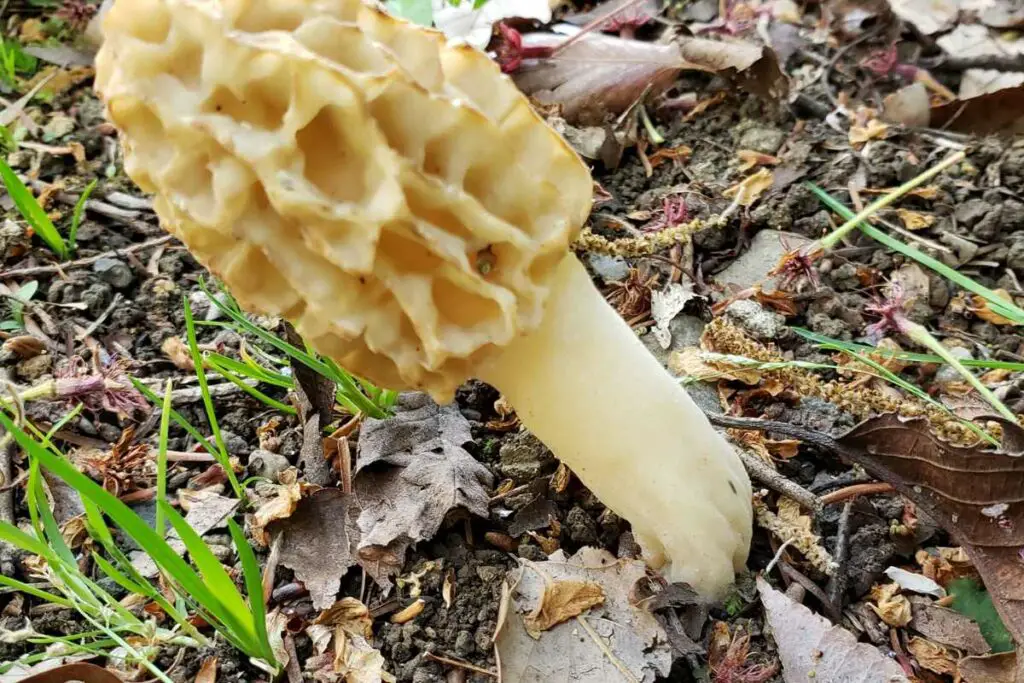
The Yellow Morel is distinguished by its characteristic cone-shaped top and honeycomb-like tip. It has a wide color spectrum, from yellow to tan, and the cap is joined to a long stem.
The cap’s height and width are limited to 3 and 2 inches, respectively.
A little pine cone or a sponge has been used to compare the Yellow Morel’s look. It may be easily distinguished from other mushrooms and flowers due to its distinctive texture and shape.
The Yellow Morel is praised for its nutty and meaty flavor and is edible. It is crucial to remember that it must be fully boiled before consumption because it contains trace levels of the poison gyromitrin.
It might result in symptoms such as nausea, vomiting, and diarrhea if not prepared properly. However, when properly cooked, the Yellow Morel adds great flavor to omelets, pasta dishes, and soups.
Final Thoughts
It’s critical to recognize the various kinds of mushrooms that might flourish in our gardens, particularly those that mimic flowers. This is because they can be easily neglected or mistaken for safe flora.
Knowing these mushrooms assists in preventing mishaps or illnesses brought on by eating toxic mushrooms.
It is crucial to use caution when eating mushrooms, and you should never consume any mushrooms you find in the wild or your garden without consulting.
